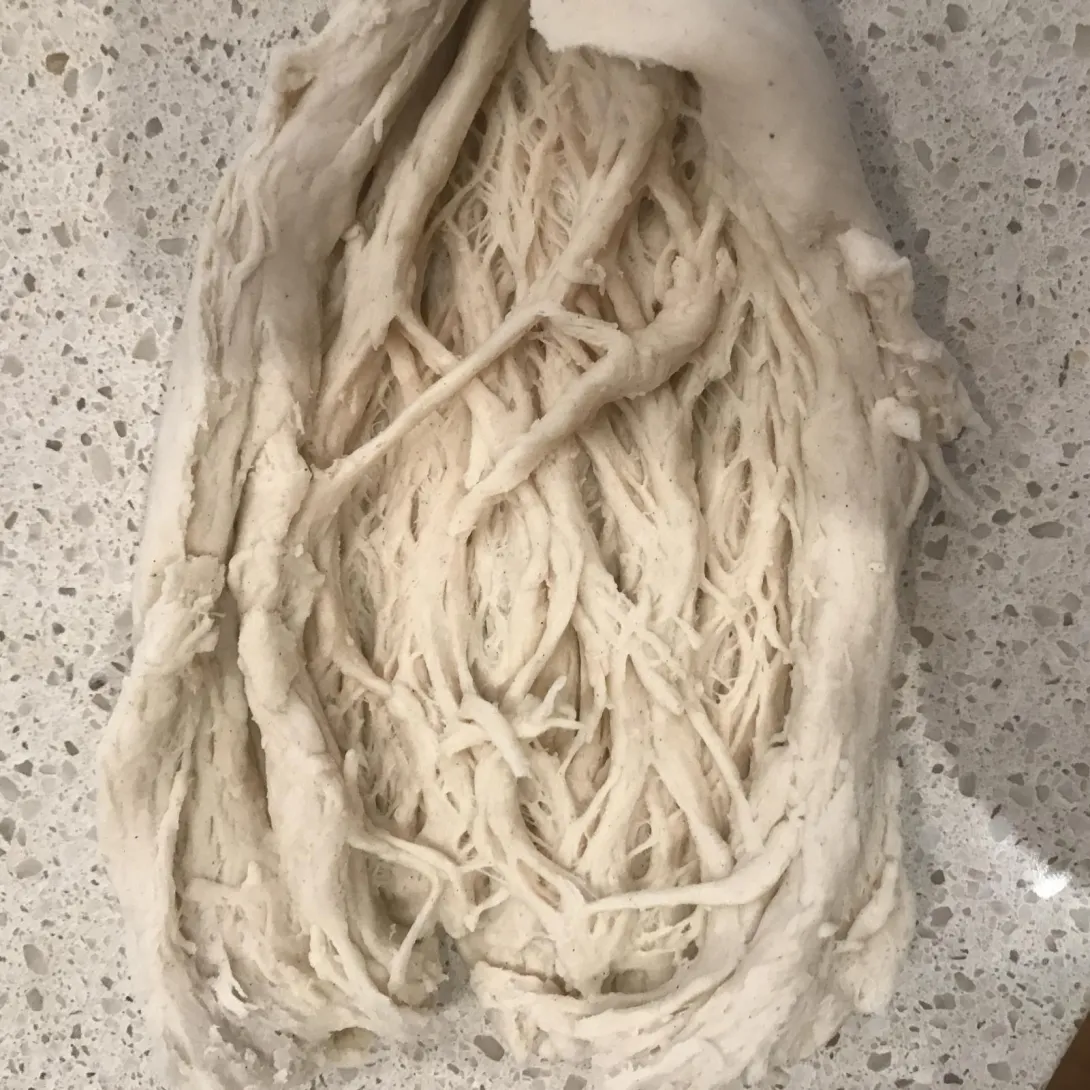
Hi! I made an enriched dough the other night and I'm a little uncertain exactly where I went wrong.
The recipe came from here: http://www.bbc.co.uk/food/recipes/norwegian_custard_buns_92546
I hand-kneaded it before the first proof for a little over 15 minutes, but couldn't get the window pane test - the dough kept ripping. It definitely got a lot smoother and more elastic and came together fine, and I was worried about over-kneading... my arms were getting very tired. So I put it in the fridge for 8 hours.
The next morning I turned it out and was rolling it into a sausage when I noticed it wanted to split in half - and in the middle it looked like the thready nightmare you see up top there.
I tried my best to knead this smooth (a little - thought now I definitely risked over kneading) - shaped and proofed it again for 30 min. The buns turned out fine, no HUGE disaster, but they were a little drier and somewhat shorter than the brioche I had been hoping for.
Was this a case of over kneading? Over proofing? Both? Help would be much appreciated!
Reminds me of the movie "Aliens"
I have to admit I've never seen a structure like that in bread dough. Fascinating!
I would try again but increase the liquid a bit so the dough is not as stiff. A windowpane is very difficult to achieve in a dry dough. By putting it in the refrigerator for 8 hours, the flour was given plenty of time to absorb the water into the fine particles and not sit on the surface. It needed just a bit more water (liquid) for this long rest so that the starchy gel could form on the surface of the flour particles join other globules of gel to form the crumb.
...and this recipe looks a little wrong. The dough is definitely under-hydrated (poor thing) and I sympathise with your exhaustion after all that kneading. It can sometimes take 15 min to knead a good Skolebrød dough with a stand mixer. I once spent more than thirty minutes beating a savarin dough by hand and had the blisters to prove it.
The recipe is missing butter. Don't know why, but, on occasion, you do find errors like this even on reputable recipe websites. The butter helps a lot: the baker's percentage (BP) used in Skolebrød doughs is about 10%. To get more technical, the liquids BP is 68% in my recipe and its the same in the BBC one. So, as they match, you need to introduce more liquid from somewhere to recreate the softness of a Skolebrød dough, hence the butter.
Maybe try it again but this time with 42g (1.5 oz) of soft butter? You need to aim for a soft dough, maybe not brioche-like, but if, after a couple of minutes of mixing, the dough looks at all dry, add a little more milk.
Don't forget that European flours tend to hydrate at a slightly lower levels than North American flours, so this also has to be taken into account when using transatlantic recipes. The best thing is to trust your eyes. If a dough looks dry; it needs liquids. Give it a drink.
As you've discovered, it is vey hard to hand-knead these kinds of dough. It'd be a challenge even for Popeye. Can you borrow a stand mixer? Bread makers sometimes have a useful kneading function, so that's a potential option too.
Btw, the best Skolebrød recipe for the home baker that I've found is this one:
http://cakeletsanddoilies.blogspot.com.au/2013/10/skolebrd-school-bread.htmlIt was recommended to me by a Norwegian and it is very good. The extra, but very simple, first step pretty much guarantees a lovely soft, tearable bun.